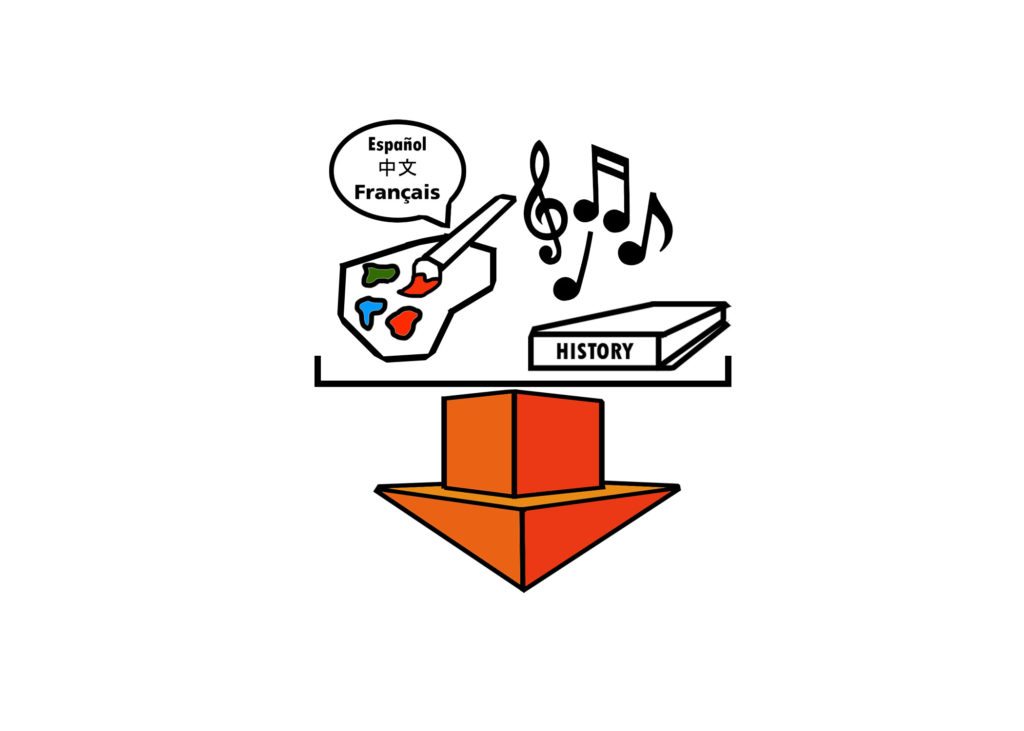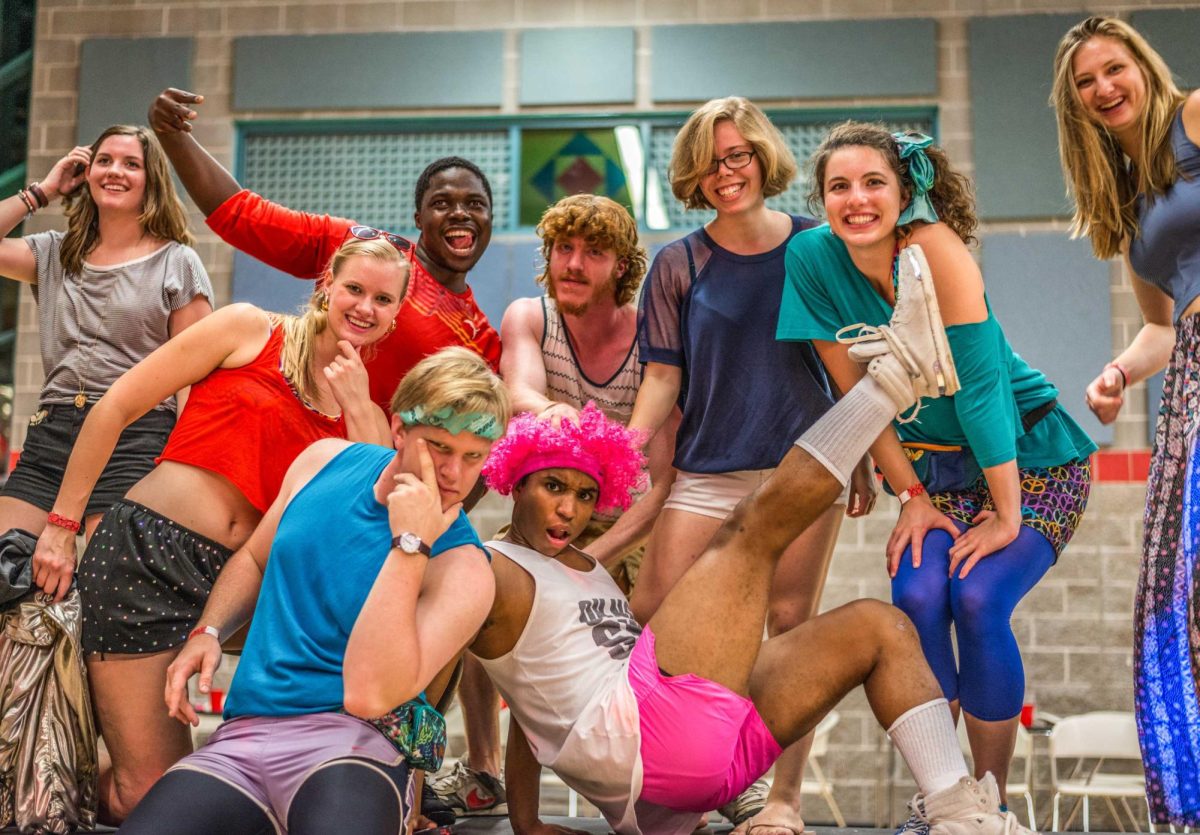By Zoe Fruchter
fruchter@grinnell.edu
Following the Great Recession of 2008, the proportion of humanities majors at elite liberal arts schools in the United States has fallen, prompting concern among the powers-that-be at institutions such as Grinnell College. Most authorities on the topic theorize that these trends are due to financial anxiety about employment.
“What’s happening at Grinnell is squarely in line with what’s happening at other national liberal arts schools,” said Dean Michael Latham about the drop in humanities majors.
In the 2016-17 school year, 23.8 percent of majors at Grinnell College were in the humanities and almost twice that were in STEM, at 40.3 percent. The relationship between these two divisions has not always been this way. Until around 2011, all three divisions at the College split the number of majors relatively evenly, vacillating around 30 percent each, excluding independent or interdisciplinary majors. But starting in 2011, the proportion of STEM majors began to rise and the proportion of humanities majors fell. Humanities majors have failed to make up more than 30 percent of the student body, and STEM major percentage has risen above 40 percent. The percentage of social science majors has remained relatively constant within that same time period.
President Kington commented on this topic in an article for The Atlantic entitled “As Humanities Majors Decline, Colleges Try to Hype Up Their Programs,” outlining the Grinnell College’s attempt to attract students interested in the humanities and convince them to major.
Although the statistics cited in that Atlantic piece may appear dire, the real postgraduate outlook for the College’s artists and humanities majors is not as grim as one might be led to believe, according to the College.
“It’s not as if you see science majors all moving into exclusively quantitative fields or humanists all moving into their parents’ basements,” Latham said. “The reality is much more complicated: that people end up pursuing a variety of different fields.”
Students at the College majoring in the humanities gain a multitude of pre-professional skills for careers in various fields, including critical thinking, strong writing skills, data contextualization and project management.
Rachel Swoap ’19, computer science and studio art double major, sees similarities between the skills she has learned in both disciplines.
“I think they fit together in a way that most people don’t see right off the bat. They’re both logical … there’s a creative process in which you document and design and experiment and fail sometimes and keep trying.”
The Center for Careers Life and Service (CLS) is active in providing professional opportunities for humanities, and specifically arts, students in terms of internships and post-graduate plans. This semester, the CLS teamed up with the Department of Alumni Relations to bring alumni working in the arts to the College to discuss initiating social change through the arts and connect with current students.
Yet the administration stress that what students major in at Grinnell is not necessarily a determinant of the career field in which students end up. Upon entering the CLS offices, one is greeted with a large infographic, called the Core Diagram, showing the majors and career destinations of Grinnell alumni. The majors are on the left of the graphic and the career fields are on the right; lines criss-cross the board showing arts majors who became bankers and psychology majors who work in the arts.
Thus, the relative percentage of humanities majors does not necessarily indicate the state of the humanities within the liberal arts. No matter their major, students still take humanities classes. Introduction to the Studio, the first class in the Studio Art major, is notoriously over-enrolled every semester, despite its multiple sections.
Professor Jenny Anger, chair of the art history department, noticedconsistent enrollment numbers in art history classes.
“In our intro class, we [the art history department] get excited if we turn someone to art history and that person might become a major,” said Anger.
Susan Ferrari, Director of Corporate, Foundation & Government Relations, identified another contributing factor to the drop in humanities majors that has not been talked about much on the national level: K-12 education. Ferrari referenced less long form reading, less music and less foreign language classes in students’ pre-Grinnell experience, which shapes students’ perceptions of what they are interested in pursuing once they get to the College. With advising from academic advisors and the CLS, however, that can change.
Many departments are aware of students’ potential humanities blind spot and have made changes accordingly, particularly in their introductory classes. The classics department changed their 100-level requirements to accommodate students who haven’t come in with Latin or Greek language experience. This semester, the music department debuted a new introductory class for those lacking prior musical exposure. The English department is running a new course called “The Physician as Writer.”
A multi-disciplinary education is the definition of a liberal arts education and remains one of the essential academic components of College’s identity since its founding. The Collegefaces the challenge of maintaining that core identity while also responding to changing student demands within national and global circumstances. While the College has added and shifted faculty allocation to meet students’ growing focus on the sciences, doing so can create a self-perpetuating system in which the humanities do not have the resources to attract the students they need. Instead, the burden lies on the institution to firmly situate itself within the liberal arts as opposed to a pre-professional context.
“Only about three percent of American college students attend a standalone liberal arts college. We’re already really a pretty rare breed, we’re already pretty unusual,” Latham said. “And so, within that sector, trying to continue to pursue what we do for the reasons that we value becomes really important.”


























































